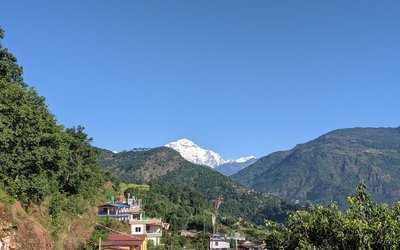Many Nepalese in their everyday lives boast about being in the land of Buddha, or Mt. Everest. More than that, some talk about the mythological links. This proves most of us are unaware of our other rich cultures and traditions. We do enjoy various public holidays, but with little or no knowledge about the events. In a similar kind of isolation stands the culture of sarangi, an instrument original to the Gandharvas. Let me take this a step further and call it the richest instrument in the world in terms of music. That is what some blogs from around the world have said, anyway.
Sarangi is a beautiful instrument, and the only instrument to resemble the sound of human voice. The Gandharvas can be heard with the instrument singing tales of war, peace, love, death and so forth. Made usually from khiro, this folk instrument boasts to be better than the classical Indian sarangi, which is so much developed and commercialized.
Listening to a sarangi can immediately transfer you to another world. The richness and the beauty of the music produced by it is beyond words. It is said that one can make you teary with words and the instrument piercing straight through your heart, livening your soul and rekindling the spirit. However, this instrument’s popularity is declining.
Following the tradition, the music is orally passed down. That means the Gandharvas do not follow any proper music learning techniques. A traditional sarangi player can play the notes very well, but he cannot explain what he played. Sadly, this is the greatest constraint as to why our music is not as famous as it should be. Furthermore, due to a variety of livelihood options available, not many Gandharvas are interested in following their culture. They easily choose other professions over what has been followed since a long time. Also not many people who play sarangi are famous. Meaning, many people who play sarangi in the country are not well known outside their communities. The nation has never been able to provide a platform to these people to showcase their talent and uplift them.
Young people learning music do not really choose sarangi. They are usually awed by other western instruments relatively. This is again another hindrance to otherwise what would have become a very famous instrument of the world.
A search on Google links sarangi mainly to India and has a very small description about the Nepalese sarangi. It is very interesting to note that a list of sarangi players on-line consists of more Indians than Nepalese. The only problem is that the Indian sarangi and the Nepali sarangi are two different instruments with a very little resemblance. The Indian sarangi is very much linked with classical music, like ragas, kheyal or dadal and somewhat with the kathak dance. Ours is very much folk based, and both make two different categories of music. Moreover, the Indian sarangi has many other noticeable differences, like the size, number of strings, materials used to make it and so on. This is what makes it so disheartening when both the instruments are put together under the same list.
It is up to us to keep our national dignity and prestige by maintaining our culture very strongly into our lives, not just talk high of mythological things that happened years ago or of the Everest that will be there for many more years to come.
In the end, the next time one Gandharva apologizes for not being able to explain what he played, a hundred Nepalese must be ashamed for not knowing how many strings are present in a sarangi.
- TANAHU HYDROPOWER PROEJCT: A Significant Achievement
- Apr 15, 2024
- AMBASSADOR HANAN GODAR: Sharing Pain With A Nepali Family
- Mar 30, 2024
- VISIT OF KfW AND EIB TO NEPAL : Mission Matters
- Mar 25, 2024
- NEPAL BRITAIN SOCIETY: Pratima Pande's Leadership
- Mar 24, 2024
- NEPAL ARMY DAY: Time To Recall Glory
- Mar 15, 2024















